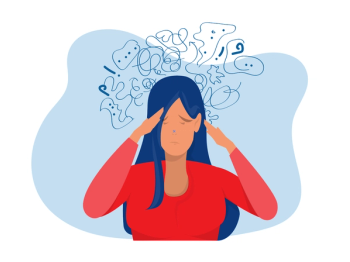
- Psychiatric Times Vol 26 No 12
- Volume 26
- Issue 12
Antonio Damasio’s Descartes’ Error: Emotion, Reason, and the Human Brain
Descartes’ Error1 can be read in 2 ways. To start, it works as an engagingly written, accurate piece of science journalism (which is something that we need more of; it’s hard to imagine running a democracy without it).
Even before Oliver Sacks reconstructed the genre as high literary art, pop neurology books-often just compendia of freakish cases and brilliant diagnoses-had great entertainment value. But these books make their subject matter sound more frivolous than it is. Before functional MRI and implantable brain stimulators, neurology was an essentially passive and observational science. It was built from observation and clinicopathological correlation of just those odd “experiments of nature,” with their uncanny dissociations and disconnections, that make for a ripping yarn.
Damasio parades some spectacularly freakish cases, but he doesn’t stop there. As a reflective practitioner, he uses those cases to argue a distinctive and original theory of mental functioning. Descartes’ Error should also be read as serious and original scientific research.
His first example is a classic. Phineas Gage was a bright, industrious 25-year-old in 1848, until an iron rod penetrated his frontal lobes in an industrial accident. Amazingly, he survived, with sensation, movement, speech, and reasoning apparently intact. But Gage’s personality changed. He became vulgar, emotionally shallow, shiftless, and unreliable. A completely different man.
Damasio’s second case, the index patient that launched his theorizing, is “Elliot,” formerly an intelligent, successful professional in his 30s, who lost parts of both frontal lobes to a meningioma. Elliot emerged from surgery as an impulsive, stimulus- bound, sleazy, unemployable jerk. Like Gage, he’d become cool and unemotive-transitory annoyance was his strongest remaining affect. And like Gage, his impairments were invisible to standard neuropsychological assessment: nothing worse than decreased autonomic response to fearful stimuli was detected.
From these 2, and a few other cases, Damasio and others extracted the key insight that acquired social incompetence and mood flattening were not dissociable; they always occurred together. They also localized a constellation of symptoms, “Gage syndrome,” to the ventromedian frontal lobes. Similar problems occur after bilateral amygdala damage and, in patients with anosognosia, after nondominant hemisphere strokes. In these cases, however, defective social reasoning is overshadowed by more gross neurological deficits.
In explaining Gage syndrome, Damasio distinguishes between primary and secondary emotions. The primary emotions, such as fear, elation, and disgust, seem to be hardwired and generated by phylogenetically old structures in the limbic system. What is more important, they evoke stereotypical, predictable body responses such as sweating and tachycardia. Secondary emotions by contrast are learned, variable, and nuanced. They originate in the frontal regions, but they work through the older primary circuitry rather than parallel to it.
The idea that the evolutionary process has built neocortical systems of regulation on top of older ones is crucial for Damasio. In this view, judging, reasoning, and subtle affective responses serve the same purposes-survival, homeostasis, reproduction-as the ancient limbic and endocrine systems. As we go about our lives, frontal mechanisms create associations between images in primary sensory cortices and physiological states of the body; images get somatically marked (the “somatic marker hypothesis”). Then, when we have to decide among competing courses of action, images of potential outcomes evoke the physiological states they’ve been marked with. In turn, these physiological states are themselves subliminally perceived, with the result that alternative actions with negative somatic markings are rapidly rejected and those with positive markings receive extra attention.
The body, then, is an essential part of the circuitry of thought and social judgment. When neurological injury prevents the generation and detection of somatic markers, we get Gage and Elliot, people disengaged from somatosensory feedback who, in subtle but crucial ways, cannot think. (The somatic marker hypothesis seems designed to describe social and personal decision making. Damasio equivocates about whether it models all thinking. He’d like to say that it does, that even the abstract reasoning that goes to prove a theorem or write a poem is, in attenuated form, continuous with the mechanisms of survival and homeostasis. Actually though, his clinical material suggests that some kinds of cool reasoning survive frontal injuries.)
Damasio’s great predecessor is William James2 (and, before him, David Hume), and his metaphysical adversary is Ren Descartes. As early as 1884, James proposed that emotion is perception of a somatic state; for example, subtract the tense muscles, tightening gut, and tachycardia from the sense of anger, and nothing is left. Damasio acknowledges the intellectual debt but faults James for vagueness and neglect of neuroanatomical details.
Descartes stands, metonymically, for the philosophical tradition of mind-body dualism, the idea that mind-an immaterial thinking substance-exists separate and distinct from the body. For the Cartesian, reasoning at its best is a pure and dispassionate product of higher brain systems. Emotions and their physiology can do nothing for reason but get in its way.
As a practical matter, Damasio claims that his model should incline medical practice toward holism, but good psychiatrists hardly need the nudge. We’re all biopsychosocial practitioners by now, diligently checking thyroid and vitamin levels and trying to steer our patients away from metabolic syndrome.
More fruitfully, Damasio’s ideas ought to direct our clinical attention to the neglected territory of judgment, that is, emotional IQ, social competence, or common sense. If Gage and others are rare instances of impaired judgment in pure culture, the partially impaired are ubiquitous: they’re all the patients, friends, and relatives who make you want to shout, “What were you thinking!”
Sociopathy is close to Gage syndrome as are, to a lesser extent, autism spectrum disorders and syndromes of impulsivity. Geriatricians know that failing social competence is an early marker of frontotemporal dementia. We, as psychiatrists, have our own judgmentally challenged anosognosics: the many psychotic patients unaware of their illness.3
Finally, there’s the legion of the awkward, gauche, and clueless-undiagnosable, but problematic all the same. Axis VI, anyone?
References:
References
1.
Damasio A.
10th ed. New York: Penguin Books; 2005.
2.
James W. What is an emotion?
Mind
. 1884;9:188-205.
3.
Amador X, David A, eds.
. Oxford, UK: Oxford University Press; 2004.
Articles in this issue
about 16 years ago
Violence Risk Assessment in Everyday Psychiatric Practiceabout 16 years ago
Medical Decision-Making Capacity of Patients With Dementiaabout 16 years ago
Keys to Avoiding Malpracticeabout 16 years ago
Critical Information for the Practice of Psychiatryabout 16 years ago
The Chameleonabout 16 years ago
Cognitive Impairment in Patients With Bipolar Disorderabout 16 years ago
The Cellular and Molecular Substrates of Anorexia Nervosa, Part 2about 16 years ago
Obesity and Psychiatric Disordersabout 16 years ago
New Compounds, Novel Applications EvaluatedNewsletter
Receive trusted psychiatric news, expert analysis, and clinical insights — subscribe today to support your practice and your patients.

















